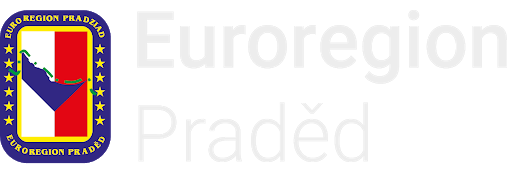Archaeological collection:
It contains several complete collections and precisely stratified and located finds from systematic research in Rýmařov and the immediate surroundings which took place from the end of the 1960s to the 1990s (locations: 1. Hrádek, 2. Suburban settlement on Bezruč Street, 3. Burget farm, 4. Strálek Castle, 5. Castle Janovice, 6. The mediaeval area of Rýmařov, 7. Barták street). The material is mainly mediaeval (13th-15th century), Renaissance (16th-17th century) and modern (up to the 19th century), ancient (1st-3rd century). The collection contains ceramics (fragments, but also an unusually high number of whole or completed pieces, including a completely unique plate for melting gold), metal objects, militaria, wood samples, bones, plant remains, glass, components of historical buildings.
Flint fragments and tools, Lusatian bronzes, specimens from the Hallstatt period, Roman coins originating not only from Rýmařov Region, but also from more distant North Moravian locations are also placed in the permanent exhibition. The high importance of the objects in this collection lies in their chronological continuity. They represent a unique and extremely data-sensitive cross-section of the development of the material culture of Northern Moravia from the 13th to the 17th century. The archaeological collection is the most numerous part of the museum's collections. It also includes cartographic, drawing and photographic documentation. Archaeological research has been published in the professional and local history press.
Historical collections:
They mainly represent objects produced or used in Rýmařov and the Rýmařov Region, or otherwise directly related to the area, originating from the period of the 17th–20th century, but mainly from the 19th–20th century. These are mainly the following materials: books, i.e. political literature, propaganda, textbooks, dictionaries, illustrated publications, specialist literature (history, archaeology, political science, natural science, linguistics, literary science, pedagogy, geography, journalism), bound editions of magazines (Přítomnost, Květy, teachers' journals, etc.), fiction, tourist guides, old prints (up to 1850).
The collections also contain photographs and copies of photographs, the photographic archive of Hedva Rýmařov and Horní Město, a photographic appendix of the town chronicle, documentary images of landscapes and settlements, albums, etc. They also include documents - notes (e.g. by prisoners from Nazi prisons), cards, periodicals, private and corporate correspondence, passbooks, memorial books, chronicles of companies and organisations, election flyers, official decisions, honorary recognitions, estates. Postcards and copies of historical postcards from the entire Rýmařov Region are also part of these collections. Next there are textiles - products of the Hedva plant (formerly Flemmich, Schiels, Henap, Brokát) - fabrics made of real and artificial silk (dresses, tie fabric, church brocade, upholstery, patterned fabric, replicas of historical wallpapers and upholstery, funeral fabrics, other samples), clothing and clothing accessories (African scarves, ties, bow ties, uniforms and caps, chasubles, women's clothing, shoes), flags and pennants, bookmarks.The collections also include tools, aids, devices, as well as daily necessities, various badges, numismatics (coins from the 1st to the 20th century, more often from the 18th to the 20th century, banknotes, medals and plaques), seals ( e.g. of guilds), stamps, tables and labels, philately, cartographic documents (especially plans of unrealized projects in the field of railway transport), stone and other marks from the area (landmarks, commemorative plaques, signs, town pillory from 1680, cast-iron coat of arms ), glass, porcelain, ceramics, firefighting equipment and weapons, militaria and hunting supplies, educational items, jewellery and bijouterie, toys, special-purpose folk tools (e.g. church Easter rattle), puppets and puppet stage equipment, a small collection of musical instruments and their parts, lamps, printing presses, architectural elements (mainly the doors of the town's prison cells and lattice or slag blocks and other bricks), a model of a folk house, sports equipment, tourist signs and plaques, funeral requisities, visual arts (oil paintings, especially baroque works by J. F. Hoffmann, graphic and combined techniques, ex libris, fine art photographs, small sculptures, artistic and craft work on glass, carving, e.g. nativity figures, bookbinder's work and carvings from bone and plastic, works of contemporary authors), natural objects, video cassettes, slides, films, audio carriers etc.
Geological collection:
Its core and most numerous part are minerals (mineralogical and petrographic samples), obtained through intensive geological exploration and mining in the Jeseníky region from the 1950s to the 1990s, or from the collections of the Geological Survey in Rýmařov, which were handed over to the museum. This collection is not only a partial cross-section of the geological periods of localities within the Jeseníky region, but also other regions of the state, primarily Moravia and to a lesser extent Bohemia. A small collection relates to the ore regions of Greece. Another collection, palaeontology, comes from Mušlov near Mikulov, from an industrially used sand pit. In addition to samples of minerals, rocks and evidence of Neogene marine fauna, the collection also contains a collection of drill cores and cuttings. The vast majority of finds are precisely located and stratified on the attached cards or marked directly with the abbreviation of the site and the depth of the original location on the objects.
Estate of Mr. and Mrs. Otto:
The collection documents the life of the Otto couple after 1918. Its most significant part relates primarily to Colonel Karl Otto (1910–1951), editor of the Czechoslovak Radio station in Cairo during World War II. Overall, this is an extensive collection of personal character (study documents, private letters, letters of important representatives of Czech culture, IDs, etc.).
The collection contains materials not only from the Czechoslovak Republic or Romania, but primarily from North Africa, i.e. writings of the redactors of the radio station, or members of the foreign resistance in the years 1941–1945 (daily reports, press of the Western resistance - Egypt, England, USA, reports from the North African battlefield, evidence of the activities of individual members of the editorial staff, cooperation with the British, written contributions of soldiers of the Czechoslovak unit in North Africa, soldiers of the allied armies, records of interrogations of prisoners, samples of handwritten front magazines, documents of post-war radio broadcasts and fabricated accusations of wartime editors, private libraries, rare war prints, etc.). In addition to written documents, the collection also contains films, gramophone records, tapes and other items. This legacy actually exceeds the area of the local region in its importance. However, its original owners, Zora Ottová (she lived in Rýmařov after World War II) and her daughters, wanted it to be stored in our museum. This estate remains a permanent part of our collections, and there is no objection to its study, as well as the study of other materials held within the institution.
The estate of Marie Kodovská:
The collection is related to the personality of the important Rýmařov poetess and art brut artist Marie Kodovská (1912–1992). It is an extensive collection of the author's written legacy (poetry, documents, correspondence, etc.), photographic material and part of her artistic work (drawings, collages, illustrations, etc.). The collection was donated to the Rýmařov museum by the author's son Vladimír Kodovský.

 English (United Kingdom)
English (United Kingdom)  Polski (PL)
Polski (PL)  Czech (Čeština)
Czech (Čeština) 






